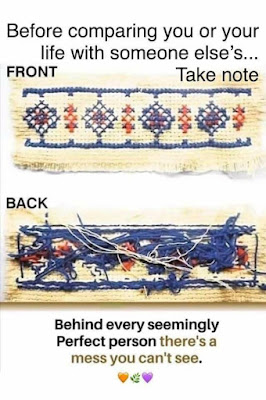There's a reason why I chose this theme and it's not because I'm a passionate gardener. It's the same reason that I chose to publish more lightweight suffrage posts after the pandemic hit our country. I did so because I felt we needed happy posts versus more negativity in our lives. It turns out I was right.
I'm an historian--not a psychologist. I've been doing research on a concept called Psychological Resilience. I wasn't even going to write about this but changed my mind after some discussions with friends. When I began to talk to friends about the concept of resilience, it seemed to help them. So here I am talking to you about it.
So far many of us have been strong and productive during the pandemic. But I do perceive cracks are beginning to surface. Many of my friends are telling me they are having problems sleeping at night. They can't turn their brain off. Some experience during the day.
Sometimes being off kilter manifests in other ways. Two weeks ago I spent more time ripping out seams from stupid mistakes than I did sewing. I noticed this has also recently happened with my blogging friends.
So l what is this resilience thing?
Psychological resilience defined briefly on wikipedia:
Psychological resilience is the ability to mentally or emotionally cope with a crisis or to return to pre-crisis status quickly. Resilience exists when the person uses "mental processes and behaviors in promoting personal assets and protecting self from the potential negative effects of stressors".
Doesn't that sound like something we all need right now?
Most of us are creative or gravitate to visual images so here is the image that I thought of while reading scholarship on this concept:
Imagine your emotional well being like this scale. The right side is heavier-- that's the stress side. Every person on this planet is facing enormous and realistic anxieties--the pandemic, economics, health, and family.
It's the other side we can work on. The theory suggests that we need to pile more weight on the positive (left) side of our scale. Those things include positive factors and the things we can control. The more we pile on the positive left side, the more likely we are to cope and function better.
Imagine your well being as a garden and the soil is what grounds you. Gardeners know that the soil is as important as the seed itself. One of the first tenets of resilience is the ability to calm oneself. I imagine that as soil. Without good soil, plants--or creativity and coping in our case--are endangered.
How do YOU clear your head? I asked some of my friends because anything we share may be of assistance to the rest of us. Most of the ideas aren't really even hobbies but activities they aren't likely to mess up or become frustrated by.
Linda gardens and reads fiction. Beth watches sewing youtube videos and researches the history of sewing.
For Joanne and Nancy, life is more limited due to their age and health. Nancy and her husband tackle intricate jigsaw puzzles together. "It helps to focus on something when I can't stand the news anymore," Nancy told me.
Joanne sends mail to family members; when she heard that Bugs Bunny was about to turn 80 years old, she copied her favorite carrot recipes and Bugs Bunny coloring pages and sent them to the family.
Lori told me she escapes with charcuterie. "Chacucu wha?" Charcuterie is apparently prepared meats, vegies, etc. that are served in an artistic format on a platter.
Lori was hoping to learn how to make salami or prosciutto roses yesterday. I like this kind of calming technique because you get to eat the results! 😋
I'm more mundane. I clear my head by weeding my garden. I started using this technique a few decades ago when the kids were teenagers and driving me crazy 😁. Nana Betty advised, "Go weed your beds. You can't control all the kids' choices but by God, you can get those dang weeds!" It helped then and continues to be useful to me.
As I told you when I first talked about the bloom theme, I'll be filling the blog with all kinds of stories and anecdotes I've collected. A lot of them fill me with inspiration or make me laugh. Inspiration and humor are important aspects of resilience. I'll be sharing photos of my antique quilts and textiles and even my own creative process while quilting.
I welcome you to share your stories, coping techniques, or the projects you work on with the rest of us. As always, you can email me at allentownquilter@gmail.com.
So let's build up our garden and get blooming! Have a great day and stay safe!






























